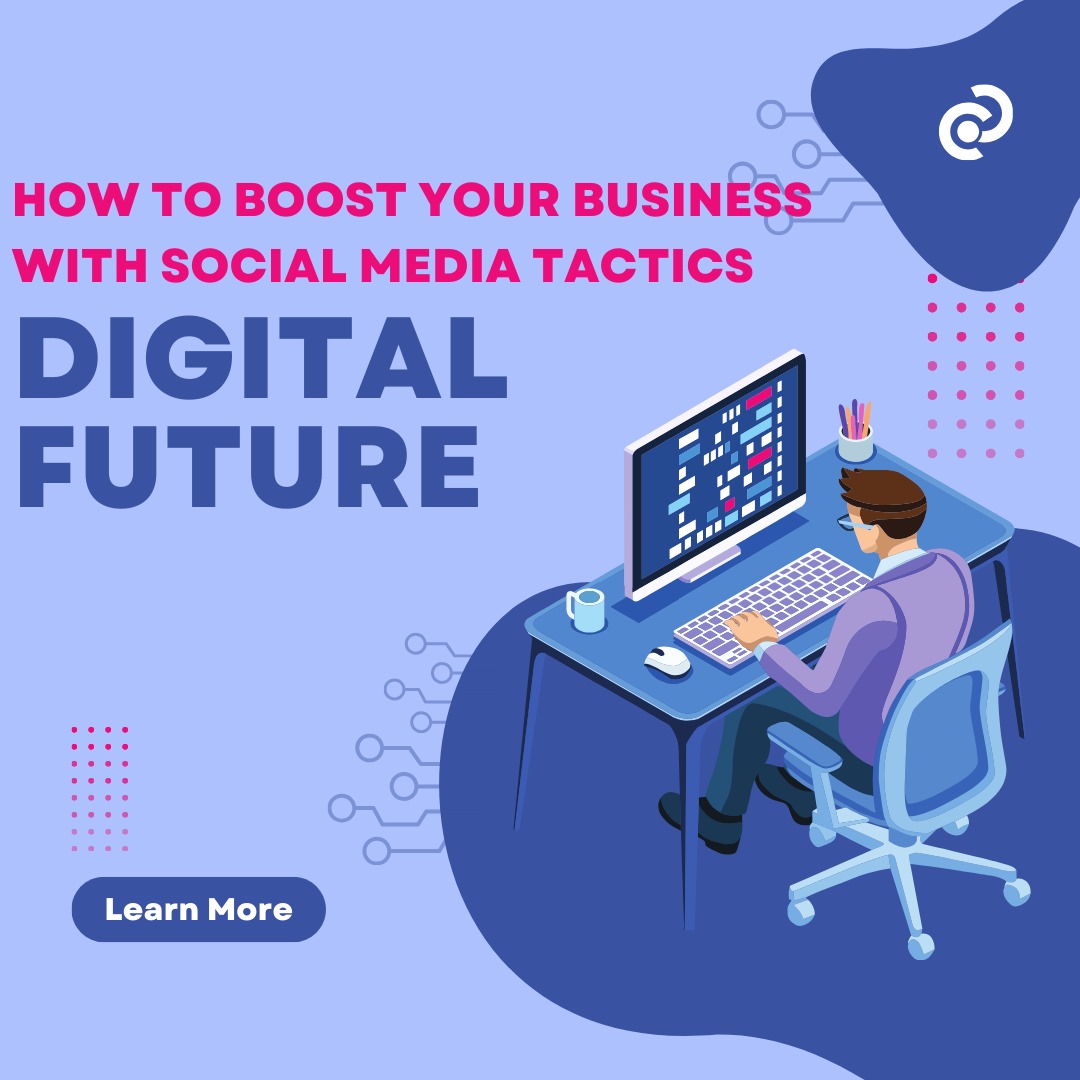In today’s digital landscape, social media has become an indispensable tool for businesses looking to expand their reach, engage with customers, and grow their brand. With billions of active users across platforms like Facebook, Instagram, Twitter, LinkedIn, and TikTok, social media offers unparalleled opportunities for businesses to connect with their target audience in real-time. However, to maximize the effectiveness of social media, businesses must implement strategic marketing approaches that go beyond simply posting content. This article explores key social media marketing strategies for businesses to succeed in the competitive digital age.
Why Social Media Marketing is Essential for Businesses
Social media marketing enables businesses to:
- Build brand awareness – A robust social media presence helps businesses put their brand in front of a large, diverse audience.
- Enhance customer engagement – Social platforms provide a unique opportunity to interact with customers and gain valuable feedback in real-time.
- Drive website traffic – Social media is an effective channel to direct users to your website or landing pages for increased conversions.
- Generate leads and sales – With targeted ads, retargeting campaigns, and call-to-action strategies, businesses can drive sales directly from social platforms.
- Establish credibility and trust – Sharing consistent, quality content helps businesses build authority in their niche and earn trust from their audience.
Key Social Media Platforms for Business Marketing
Before diving into strategies, it’s important to know which platforms are best suited to your business goals. Each platform attracts different audiences and serves different purposes.
- Facebook: The largest social network, great for targeting broad demographics and sharing various types of content (images, articles, events, ads).
- Instagram: Ideal for visual storytelling, building brand aesthetics, and connecting with younger demographics through photos, stories, and reels.
- LinkedIn: Best for B2B marketing, thought leadership, professional networking, and sharing industry insights.
- Twitter: Perfect for real-time updates, engaging in conversations, and responding to trends or customer inquiries.
- TikTok: A fast-growing platform popular for viral, short-form video content. It’s an excellent choice for brands aiming to reach a younger audience.
- Pinterest: A visual platform where businesses can showcase products and ideas, particularly in industries like fashion, home décor, food, and beauty.
Developing an Effective Social Media Marketing Strategy
The key to successful social media marketing is developing a comprehensive strategy that aligns with business goals. Below are the essential steps to create an effective social media marketing plan.
1. Set Clear Goals and Objectives
Before creating content or scheduling posts, businesses need to define their social media goals. These goals should be specific, measurable, attainable, relevant, and time-bound (SMART). Examples of common social media goals include:
- Increasing brand awareness.
- Driving traffic to a website or landing page.
- Generating leads and sales.
- Building community engagement.
- Enhancing customer service.
Having clear goals helps guide the direction of your strategy and allows for better tracking of progress.
2. Know Your Target Audience
Understanding your target audience is fundamental to creating content that resonates. Businesses need to define their ideal customer profile, taking into account demographics (age, gender, location), psychographics (interests, behaviors), and online activity. This knowledge helps tailor content that is relevant and engaging, making it more likely to foster interaction.
Using social media analytics tools can provide insights into the demographics of your current followers, allowing you to refine your audience targeting. Tools like Facebook Insights, Twitter Analytics, and Instagram Insights provide valuable data on who is engaging with your content and when.
3. Content Planning and Creation
Content is king in social media marketing. The key to engaging your audience is creating high-quality, valuable content that aligns with your brand voice and objectives. Businesses should plan and create a variety of content types, including:
- Informative Content: Share industry insights, how-to guides, or product demos to educate your audience.
- Entertaining Content: Create fun and engaging posts, including memes, challenges, or quizzes that encourage audience participation.
- User-Generated Content: Encourage your followers to share their experiences with your products or services. Reposting user-generated content builds trust and promotes community.
- Visual Content: Incorporate images, videos, infographics, and GIFs to capture attention and increase engagement.
- Behind-the-Scenes Content: Show the human side of your brand by sharing behind-the-scenes looks, company culture, or employee spotlights.
- Influencer Content: Collaborate with influencers to expand your reach and credibility, particularly on Instagram and TikTok.
Creating a content calendar ensures consistency and allows businesses to plan ahead for seasonal campaigns, product launches, or special events.
4. Post Consistently
Consistency is critical when it comes to social media marketing. Posting regularly keeps your brand top-of-mind and ensures that you stay connected with your audience. However, posting too frequently or inconsistently can lead to disengagement.
Each platform has its optimal posting frequency:
- Facebook: 1-2 posts per day.
- Instagram: 3-5 posts per week.
- Twitter: 3-5 tweets per day.
- LinkedIn: 1-2 posts per day.
- TikTok: 1-3 posts per day.
The timing of posts is also important. Social media platforms provide data on when your audience is most active, which can help maximize visibility and engagement.
5. Engage and Respond
Social media is not just a platform for broadcasting content—it’s a two-way communication channel. Engaging with your followers, responding to comments, and initiating conversations are essential for building relationships and fostering loyalty.
- Respond to Comments and Messages: Make sure to respond promptly to customer inquiries, feedback, or complaints. Engaging with your audience shows that you value their opinions and helps build trust.
- Like and Share User Content: Acknowledge your customers’ experiences by liking and sharing their posts. This can increase brand loyalty and encourage more user-generated content.
- Host Interactive Content: Polls, Q&A sessions, or live streams can help build deeper connections with your audience and foster real-time interaction.
6. Leverage Paid Advertising
While organic reach on social media can be limited, paid advertising offers a way to target specific demographics and achieve immediate results. Each platform has its ad formats:
- Facebook/Instagram Ads: Sponsored posts, carousel ads, video ads, and story ads that appear in users’ feeds or stories.
- LinkedIn Ads: Sponsored content, text ads, and InMail for B2B marketing.
- Twitter Ads: Promoted tweets, trends, and accounts.
- TikTok Ads: In-feed ads, branded effects, and top-view ads.
With the power of social media ad targeting, businesses can focus on specific audience segments based on interests, behaviors, demographics, and location. Retargeting ads can also help bring back website visitors who haven’t completed desired actions like signing up or making a purchase.
7. Analyze and Optimize
To ensure the effectiveness of your social media marketing efforts, regularly analyze key performance indicators (KPIs). KPIs might include metrics such as:
- Engagement rate (likes, shares, comments).
- Follower growth rate.
- Website traffic generated from social media.
- Conversion rates from social media campaigns.
Tools like Google Analytics, Facebook Insights, and Hootsuite can help track these metrics. Use the data to refine your content, posting times, and advertising strategies. Social media marketing is an ongoing process that requires continual optimization to stay relevant and effective.
Conclusion
Social media marketing has become a powerful and indispensable tool for businesses seeking to grow their brand, increase engagement, and drive conversions. To be successful, businesses must develop a clear strategy that includes setting goals, understanding their audience, creating high-quality content, engaging consistently, leveraging paid advertising, and analyzing results. By implementing these strategies, businesses can build meaningful relationships with customers and achieve lasting success in the digital age. Social media marketing offers businesses the opportunity to reach a global audience, but only with a thoughtful, well-executed plan can they unlock its full potential.




Fantastic post! 👏 I love how you’ve broken down social media marketing into actionable steps—from setting SMART goals and understanding your audience to mixing content types and leveraging analytics. The section on choosing the right platform for your business really resonated with me. It’s so true that while Instagram and TikTok excel with visual storytelling, LinkedIn shines for B2B and thought leadership.
Thank you for emphasizing the importance of engaging with followers—not just posting, but actually responding, running polls, and hosting live Q&A sessions to build community. And your point on paid advertising and continuous performance tracking is key—without measurement, how do you know what works?
For anyone looking to get hands-on with this strategy or seeking structured learning support, you might consider the Online Digital Marketing Course—it’s an excellent way to master these tactics with guidance, real-world projects, and up-to-date industry insights.
Thanks again for sharing such a practical and strategic guide!
“This article delivers clear, actionable strategies for boosting brand engagement and sales through social media—from setting SMART goals to leveraging user-generated content and analytical insights. It reinforces the idea that consistency, authenticity, and data-driven adaptation are critical for success. As someone looking to deepen my expertise, an Online Digital Marketing Coursethat covers social media strategy, analytics, and content creation would be a perfect complement — helping turn these recommendations into measurable results.”
Great insights! This blog really helps understand what factors to consider before choosing a digital marketing course in Preet Vihar. I completely agree that checking for placement support and practical training makes a big difference. If anyone is also exploring nearby options, you can check out theDigital Marketing Course in Noida
, which offers excellent hands-on training and career guidance.